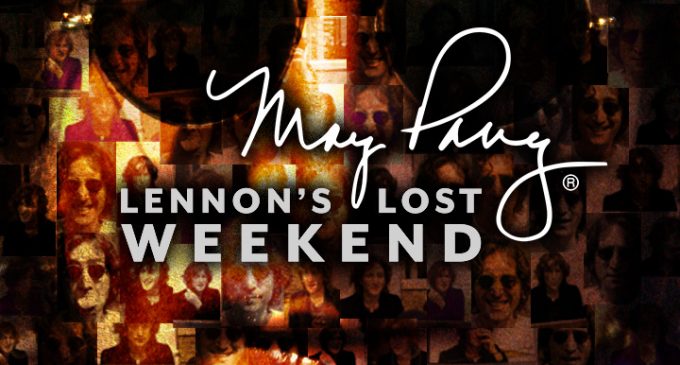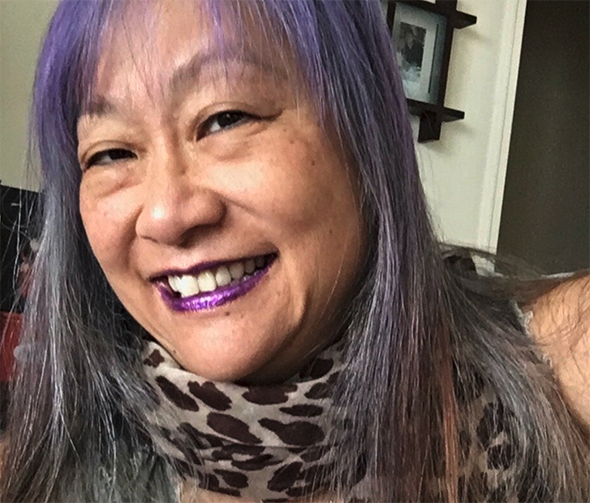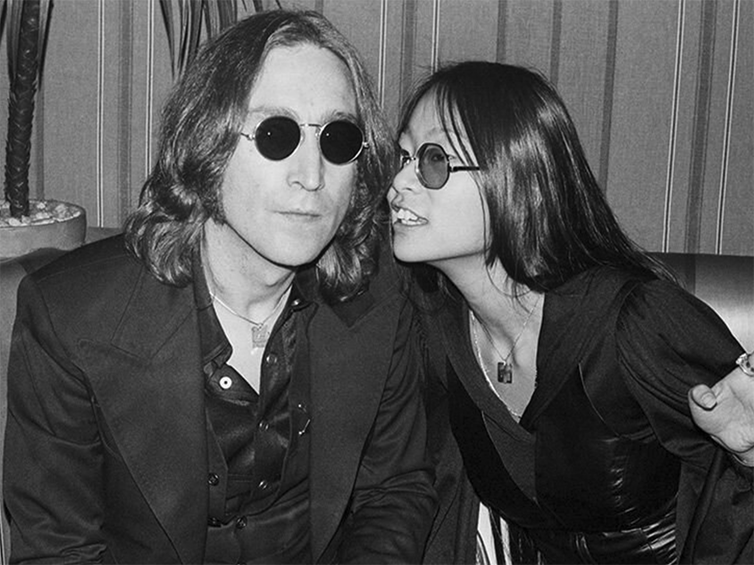
Welcome to the May Pang Gallery

ONE OF THE MOST RECOGNIZED FACES OF THE 20TH CENTURY — WHOSE MUSIC CHANGED THE WORLD — COMES ALIVE IN MY DIGITAL NFT GALLERY.
Most people know me for my 18-month romance with John Lennon. Our relationship actually spanned 10 years (as they would say today, “it’s complicated”). John thought I captured his true essence through my camera lens and insisted that I photograph him at anytime. I’m glad he did.
This first series of photos is called The Walls and Bridges Collection and were taken for the production and promotion of John’s #1 album by the same name. I am happy to bring these images to a new audience through this transformative medium and share with you the John I saw through my eyes.
“Lost Weekend”
At the time Lennon had his 18-month relationship with Pang, he was in a period of his life that he would later refer to as his “Lost Weekend”, in reference to the film and novel of the same title.
In mid-1973, Pang was working on the recording of Lennon’s Mind Games album. Lennon and Ono were having marital problems and decided to separate, and Ono suggested to Pang that she become Lennon’s companion. Ono explained that she and Lennon were not getting along, had been arguing and were growing apart, and said that Lennon would start seeing other women. She pointed out that Lennon had said he found Pang sexually attractive. Pang replied that she could never start a relationship with Lennon as he was her employer and married. Ono ignored Pang’s protests and said that she would arrange everything. Ono later confirmed this conversation in an interview. In October 1973, Lennon and Pang left New York for Los Angeles to promote Mind Games, and decided to stay for a while, living at the homes of friends.
While there, Lennon was inspired to embark on two recording projects: to make an album of the old rock ‘n’ roll songs that inspired him to become a musician, and to produce another artist. In December 1973, Lennon collaborated with Phil Spector to record the oldies album, Rock ‘n’ Roll. The alcohol-fueled recording sessions became legendary. Every musician in L.A. wanted to participate, but soon Lennon’s drinking and Spector’s erratic behavior (which included his firing a gun in the studio control room) caused the sessions to break down.[11] Then Spector, who claimed to have been in a car accident, took the sessions tapes and was unreachable.
In March 1974, Lennon began producing Harry Nilsson‘s Pussy Cats album, thus named to counter the “bad boy” image the pair had earned in the media with two drinking incidents at The Troubadour: the first when Lennon placed a Kotex on his forehead and scuffled with a waitress at a concert given by Ann Peebles, who had released one of Lennon’s favorite records at the time, ‘I Can’t Stand The Rain’ and, two weeks later, when Lennon and Nilsson were ejected from the same club after heckling the Smothers Brothers. Lennon thought it would be a good idea for the musicians to live under one roof to ensure they would get to the studio on time, so Pang rented a beach house in Santa Monica, for her, Lennon, Nilsson, Ringo Starr and Keith Moon to live in. At this time, Pang encouraged Lennon to reach out to family and friends. He and Paul McCartney mended fences and played together for the first and only time after the breakup of the Beatles (see A Toot and a Snore in ’74). Pang also arranged for Julian Lennon to visit his father for the first time in almost four years.
Julian began to see his father more regularly. Lennon bought Julian a Gibson Les Paul guitar and a drum machine for Christmas in 1973, and encouraged Julian’s interest in music by showing him some chords.[14][15] “Dad and I got on a great deal better then,” recalls Julian. “We had a lot of fun, laughed a lot and had a great time in general when he was with May Pang. My memories of that time with Dad and May are very clear—they were the happiest time I can remember with them.”
In June 1974, Lennon and Pang returned to live in Manhattan. Lennon stopped drinking and concentrated on recording. Lennon previously had cats while he lived at his Aunt Mimi’s house in Liverpool; he and Pang adopted two cats that they named Major and Minor. In the early summer, Lennon was working on his Walls and Bridges album when the couple moved into a penthouse apartment at 434 East 52nd Street. On August 23, Lennon and Pang claimed to have seen a UFO from their terrace, which had a panoramic view of Queens. To gain access to the deck, Lennon and Pang had to climb out of their kitchen window. On the night in question, a naked Lennon excitedly called Pang to join him on the deck outside and they both watched a circular object silently floating less than 100 feet away. Lennon called Bob Gruen—Lennon’s “official” photographer—and told him what had happened. Gruen suggested Lennon should call the police, but Lennon laughed it off, saying, “I’m not going to call up the newspaper and say, ‘This is John Lennon and I saw a flying saucer last night.'” Gruen called the local police precinct which confirmed that three other people had reported a sighting, and the Daily News said that five people had reported a sighting in the same area of New York where Lennon and Pang lived. Lennon references the incident in the song, “Nobody Told Me“.
Walls and Bridges rose to the top spot on the album charts. Lennon achieved his only number-one solo US single in his lifetime with “Whatever Gets You Thru the Night“. Pang’s is the voice whispering Lennon’s name on “#9 Dream“. Another song, “Surprise, Surprise (Sweet Bird of Paradox)”, was written about her. Julian played drums on the album’s last track, “Ya Ya”. While recording Walls and Bridges, Al Coury, vice president of promotion for Capitol Records, got possession of the chaotic Spector session tapes and brought them to New York. Lennon would complete his oldies album, which would be called Rock ‘n’ Roll, with the same musicians he used on Walls and Bridges. Pang received an RIAA gold record award for her work on Walls and Bridges and continued her work as production coordinator of Lennon’s Rock ‘n’ Roll album, where she was credited as “Mother Superior”. Pang also worked on albums by Nilsson, Starr, Elton John and David Bowie.
While visiting Mick Jagger at Andy Warhol‘s compound in Montauk, New York, Lennon and Pang saw a Scottish-style cottage for sale close to the Montauk Point Lighthouse. Lennon asked a real estate broker to put in an offer for it in February 1975. In the same month, Lennon and Pang were also planning on visiting Paul and Linda McCartney in New Orleans, where Wings were recording the Venus and Mars album, but Lennon reconciled with Ono the day before the planned visit, after Ono said she had a new cure for Lennon’s smoking habit. After the meeting, he failed to return home or call Pang. When Pang telephoned the next day, Ono told her that Lennon was unavailable because he was exhausted after a hypnotherapy session. Two days later, Lennon reappeared at a joint dental appointment; he was stupefied and confused to such an extent that Pang believed he had been brainwashed. Lennon told Pang he had reconciled with Ono and their relationship was over. Over the coming years, Pang quietly met Lennon a few times but their relationship was never rekindled.
Lennon would lament this period publicly but not in private. Journalist Larry Kane, who befriended Lennon in 1964, wrote a comprehensive biography of Lennon which detailed the “Lost Weekend” period. In the interview with Kane, Lennon explained his feelings about his time with Pang: “You know Larry, I may have been the happiest I’ve ever been… I loved this woman (Pang), I made some beautiful music and I got so fucked up with booze and shit and whatever.”
PRESS COVERAGE
For more information, please visit: MayPangGallery.com




